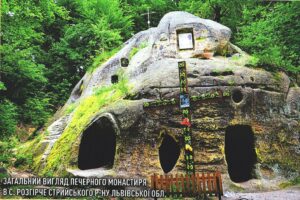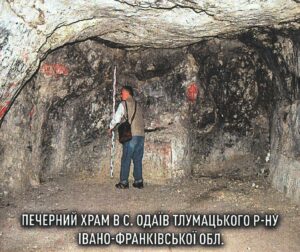The historical-archaeological research of the monastery monuments of the Carpathian region, carried out by the team of the Institute of History, Ethnology and Archeology of the Carpathians, made it possible to discover the Carpathian belt of medieval and modern monasteries, which are located on the sites of ancient rock sanctuaries. Awareness of the Carpathian phenomenon of monastic monuments became possible thanks to the simultaneous study of Christian and pagan temples from the Spassky Monastery in the village of Spas of the Starosambir district of the Lviv region, 7 km from the Ukrainian-Polish border, to the rock monastery in the village of Neporotove, Sokyryany district, Chernivtsi region, near the Ukrainian-Moldovan border. The belt of monastic monuments stretched from the southeast to the northwest through the villages of Tydiv, Smodna, Pistyn, Lyucha, Dora, Zarichya, Nazavyziv, Hrabovets, Manyava, Knyazivske, Svarychiv, Hrabiv, Pereginsk, Tserkivna, Sukil, Bubnyshche, Rozhirche, Urych, Spas.
In general, the search for new documentary sources in archival repositories and scientific libraries of Lviv, Kyiv, Krakow, Warsaw, Bucharest, Vienna, combined with field archaeological explorations, made it possible to locate more than 140 monasteries of the Middle Ages and modern times only in the territory of Ivano-Frankivsk region. The vast majority of monastic abodes in the mountainous part of the region, of which more than 40 have been discovered today, are located on the sites of pagan rock temples and sanctuaries. More than 60 of the latter have been recorded here.
The second large group of monasteries in the Carpathians is concentrated in Transnistria. Thus, two belts of sacred monuments are clearly distinguished on the territory of the region: 1) Carpathian, which consists of more than 100 rock pagan temples and Christian monasteries; 2) Dniester, which includes hundreds of objects with a clear predominance of monastic monasteries. This concentration of cult monuments is the largest in Ukraine (next to Crimea) and Eastern Europe.


